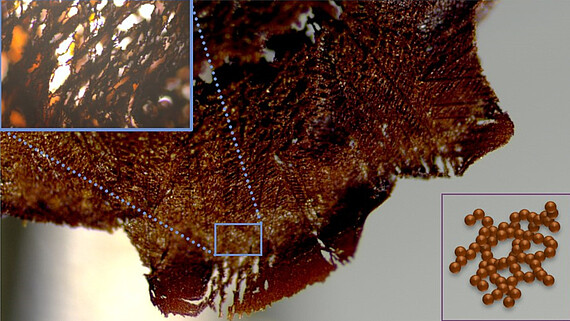
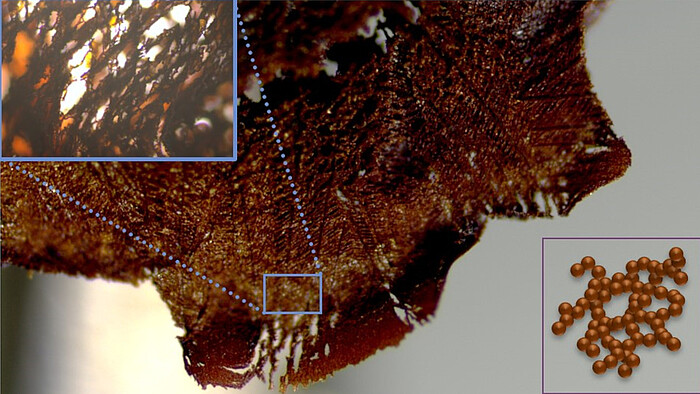
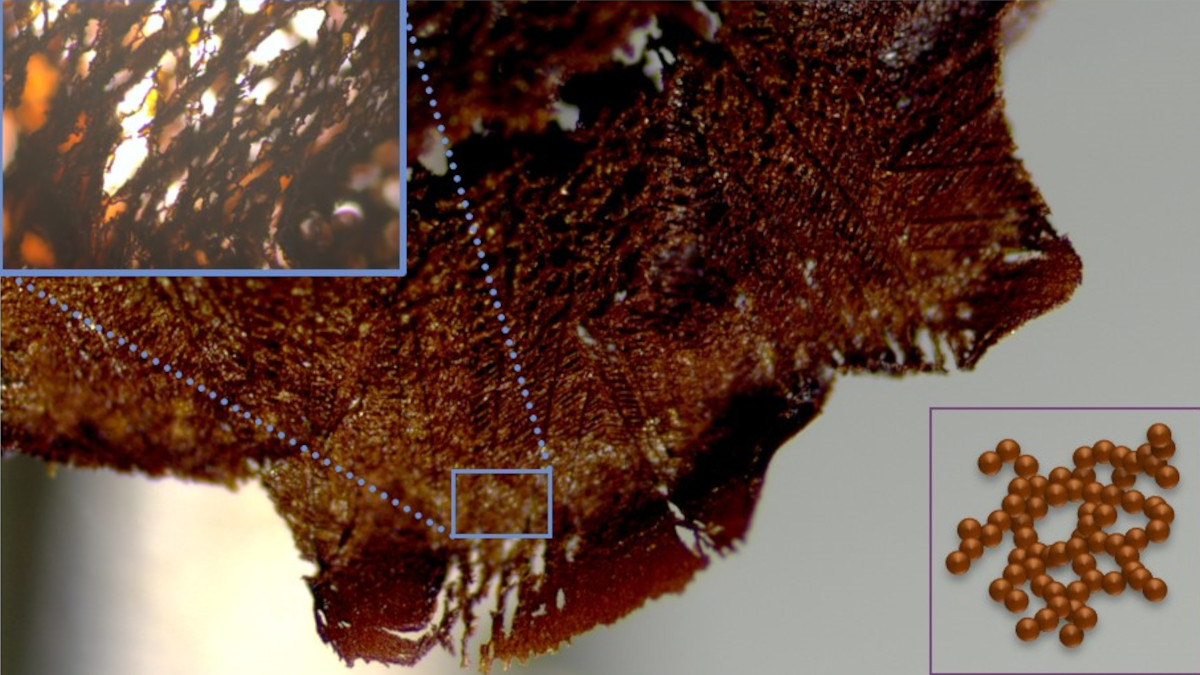
The group focuses on the fundamental and applied research on magnetic nanomaterials and functional structures. We are devoted to the synthesis and characterization of magnetic nanoparticle colloids and their assemblies, as well as in the structure-property correlation of the assemblies thereof. Moreover, our research interest covers the study of the dynamic behavior of magnetic nanoparticles and their ability to deliver heat when subjected to high frequency alternating magnetic fields, magnetic-driven assembly processes and its impact on the final structure and properties, and the development of magnetic nanoparticle inductive heating based-applications, from biomedicine to catalysis.
Synthesis of Magnetic Nanoparticles And Funcitonal Structures
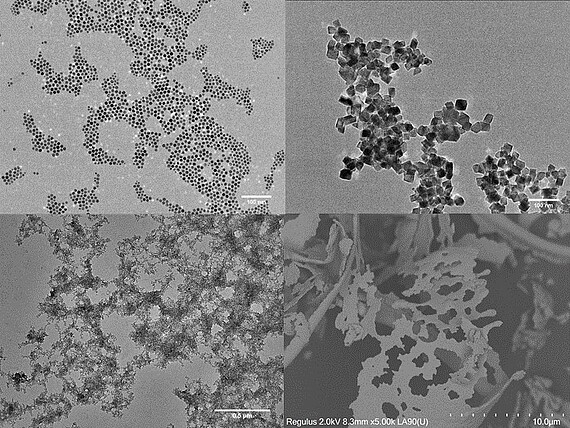
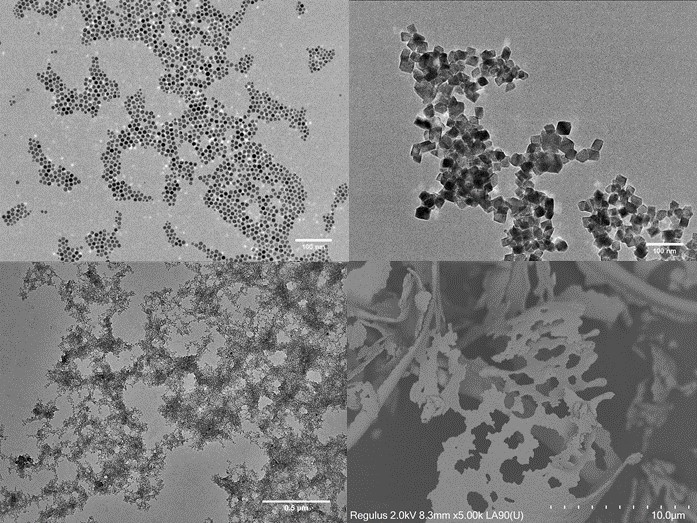

Fascinated by the versatility and emerging properties of magnetic materials in the nanoscale, such as superparamagnetism, in our group we aim to cover the synthesis and characterization of these materials from the nanoparticles to their self-assembly into nanoparticle-based gels and their implementation as part of multifunctional materials. Interestingly, the assembly of nanoparticles into gels allows to obtain macroscopic materials with high porosity and high surface areas with the properties of their building blocks or beyond, enabling their use in applications such as catalysis, sensing or environmental remediation. Our key interests are:
Our key interests are:
Synthesis of magnetic nanoparticle colloids
- High quality magnetic nanoparticles in organic or aqueous media, with different composition, size, shapes and core-shell.
- Surface functionalization and water transfer for biomedical applications.
- Magnetic-driven assembly of nanoparticles into anisotropic structures.
- Investigation of nanoparticle interactions and their heating efficiencies.
Fabrication of magnetic-nanoparticle assemblies
- Magnetic nanoparticles assembled into macroscopic self-supported porous networks, either in the form of hydrogels, aerogels or cryogels and search for new externally triggered gelation techniques.
- Use of supercritical drying or freeze drying to obtain highly porous aerogels or cryogels.
- Simuli-responsive nanoparticle-based assemblies.
- Study of the emerging properties due to the collective behavior and interaction of nanoparticles into nano-, micro- and macro-structured materials.
Novel functional materials
- Development of materials with magnetic and plasmonic properties, such as novel magnetoplasmonic gels for sensing, catalytic or biomedical applications.
- Materials with tunable optical properties under external triggers.
- Magnetic/thermal stimuli-responsive platforms.
Magnetic Characterization
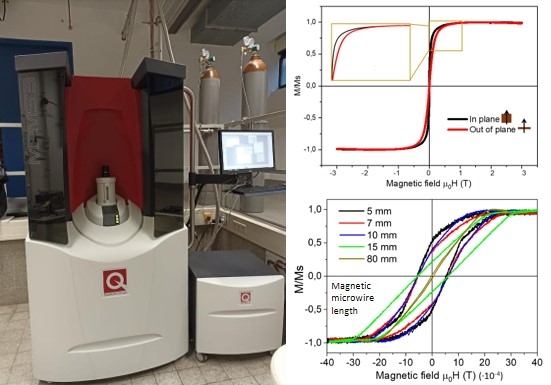


We are devoted to perform improved magnetic measurements using a SQUID MPMS3 from Quantum Design, the interpretation and analysis of the data. In particular, we are investigating the resulting magnetic properties of magnetic nanoparticles assembled into macroscopic systems (cryo-, hydro- or aerogels), focusing on the understanding of the magnetic interactions and the collective properties that arise. As well, we have close collaboration with the Polarz group and with researchers from national and international institutions, providing magnetic measurements and insights into the properties of a myriad of magnetic materials, either in powder form or in films.
Measurement details:
- The SQUID MPMS3 allows to measure using the traditional DC mode or in VSM mode, achieving sensitivities in the order of 10-8 emu by combining the SQUID sensor with vibrating sample magnetometry.
- It can measure from 1.8 K to 400 K and a maximum applied magnetic field of ±7 T.
- Possibility to measure in bulk, powder or thin films (in plane and out of plane measurements).
- For any special request or doubt, do not hesitate to contact via email.
Magnetic Hyperthermia Research and Other Applications
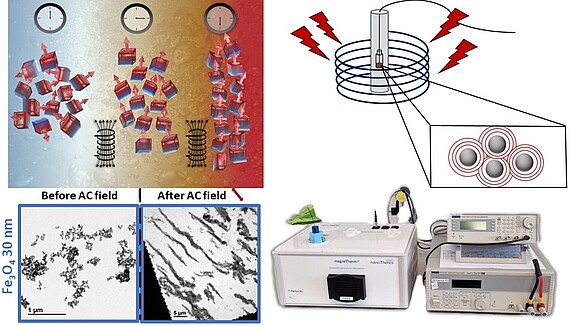
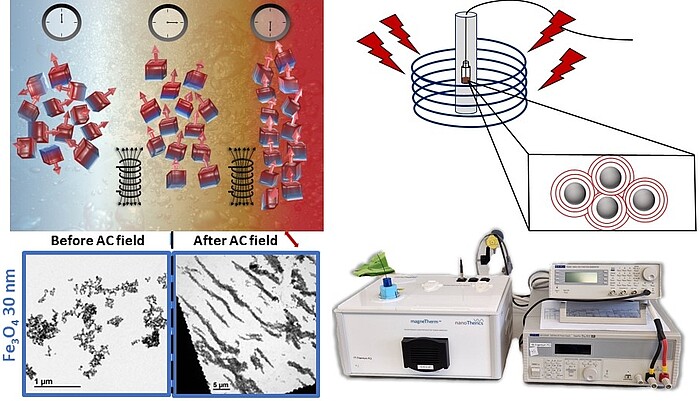
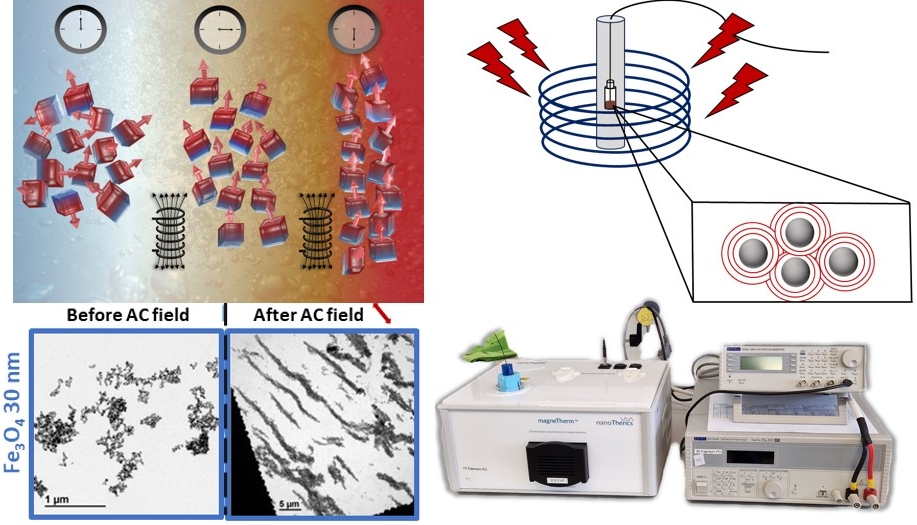
In biomedicine, magnetic nanoparticles have proven their value as contrast agents for MRI (Magnetic Resonance Imaging), controlled drug release, as detection and diagnostic tools and as nanoheaters in magnetic hyperthermia treatments. Magnetic hyperthermia consists on the local increase in temperature in a tumor, which results in the death of cancer cells without damaging healthy ones. The heat is released by the magnetic nanoparticles upon application of radiofrequency fields. In particular, iron oxide nanoparticles have been approved for clinical use by various regulatory agencies as contrast agents and for the treatment of anemia. Moreover, the magnetic induction heating of magnetic nanoparticles is highly interesting and valuable also in other fields, such as catalysis, water treatment and as a welding technology.
Regarding magnetic nanoparticle-mediated inductive heating applications, our main interests are:
- The search of high heating efficiency materials, either nanoparticle colloids or novel functional materials.
- The understanding of the physical heating mechanisms and the influence of different parameters on the heating efficiency, to be able to adjust and fine-tune the nanoparticles for the desired application.
- The development of applications of induction heating beyond, but including, magnetic hyperthermia. For that, we count with a magneTherm from Nanotherics, which can apply frequencies between 100-900 kHz and a maximum applied field of 30 mT.
Cooperations
In collaboration with the Cluster of Excellence PhoenixD, we are highly interested in designing functional magneto-plasmonic materials with advanced properties towards optical applications, as well as in the development of characterization tools to perform magneto-optical measurements of nanoparticle colloids and their assemblies under magnetic fields.
Join us!
If you would like to be part of the MagneTeam to do your bachelor, internship or master thesis, please contact via email.
May the -magnetic- force be with you!
Head of the group
30167 Hannover


